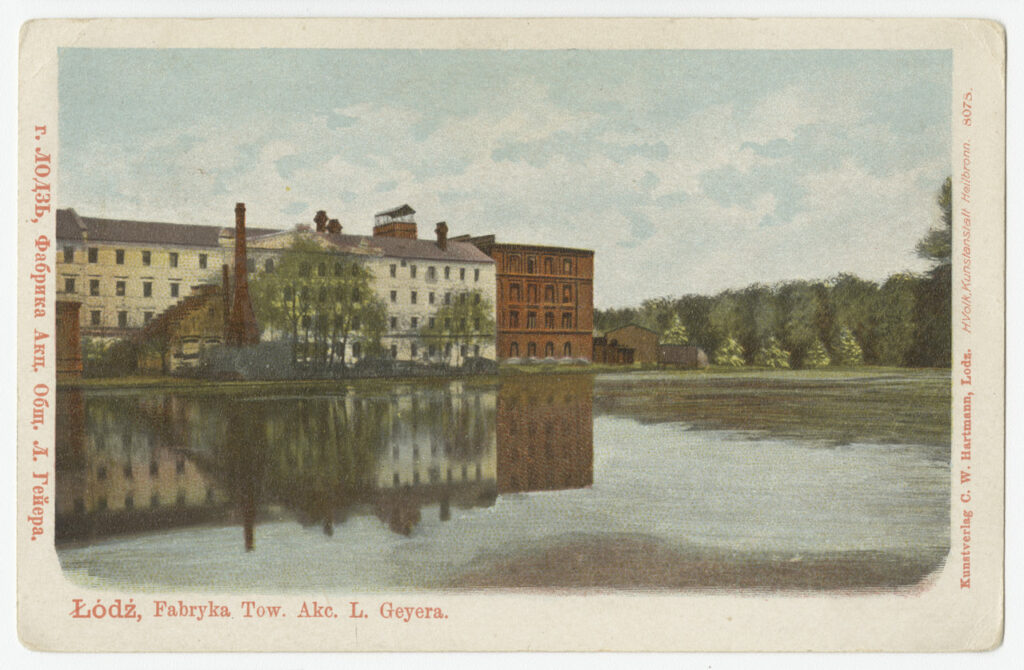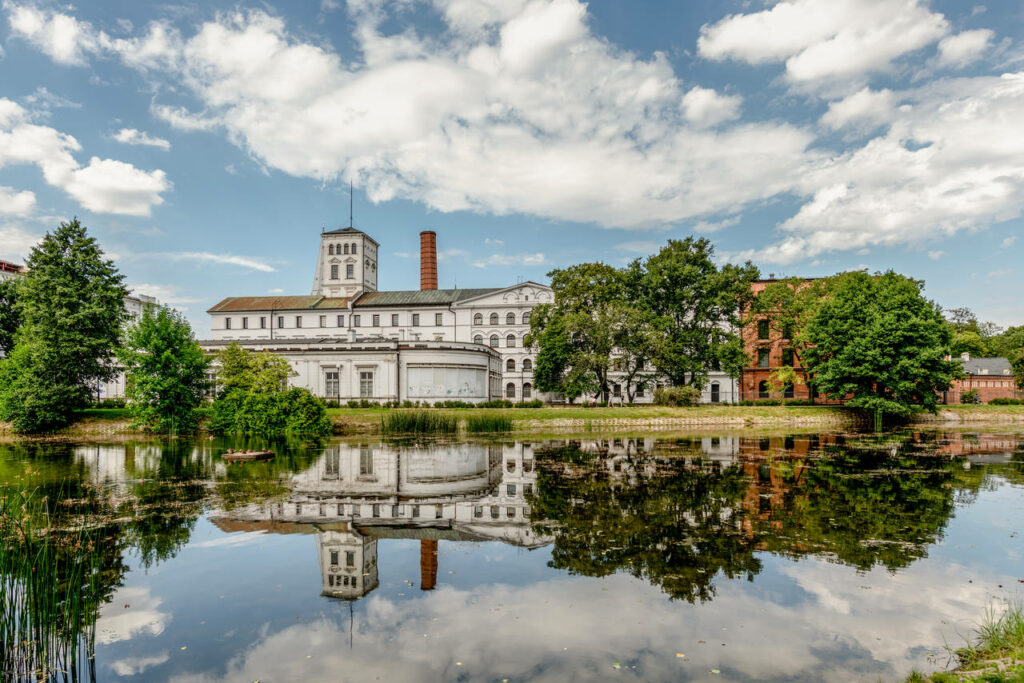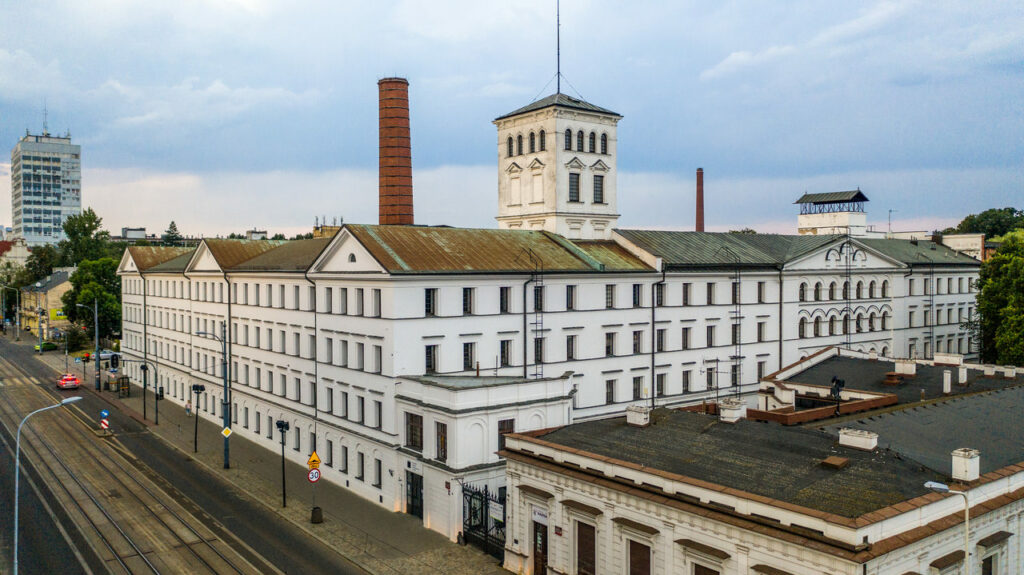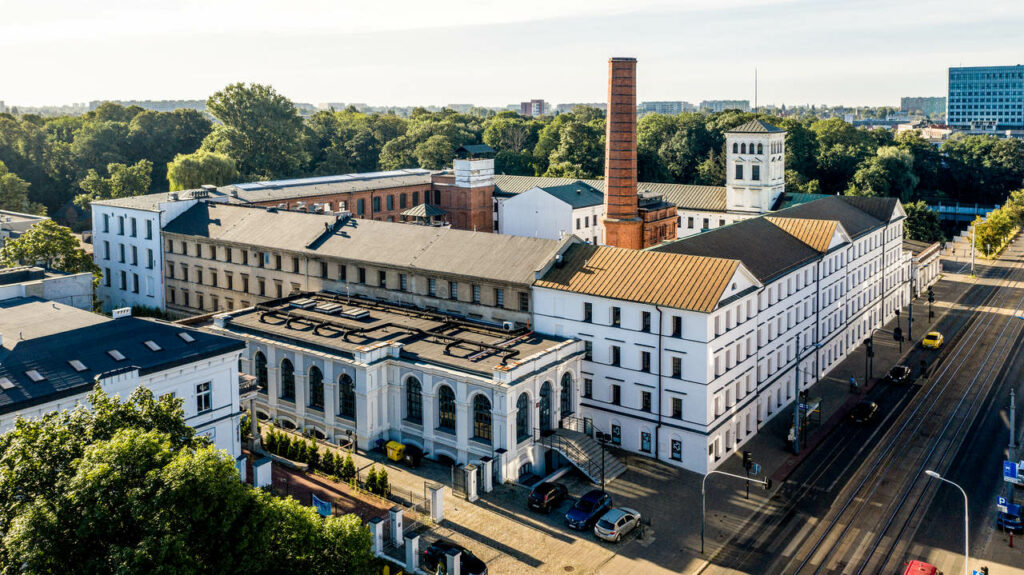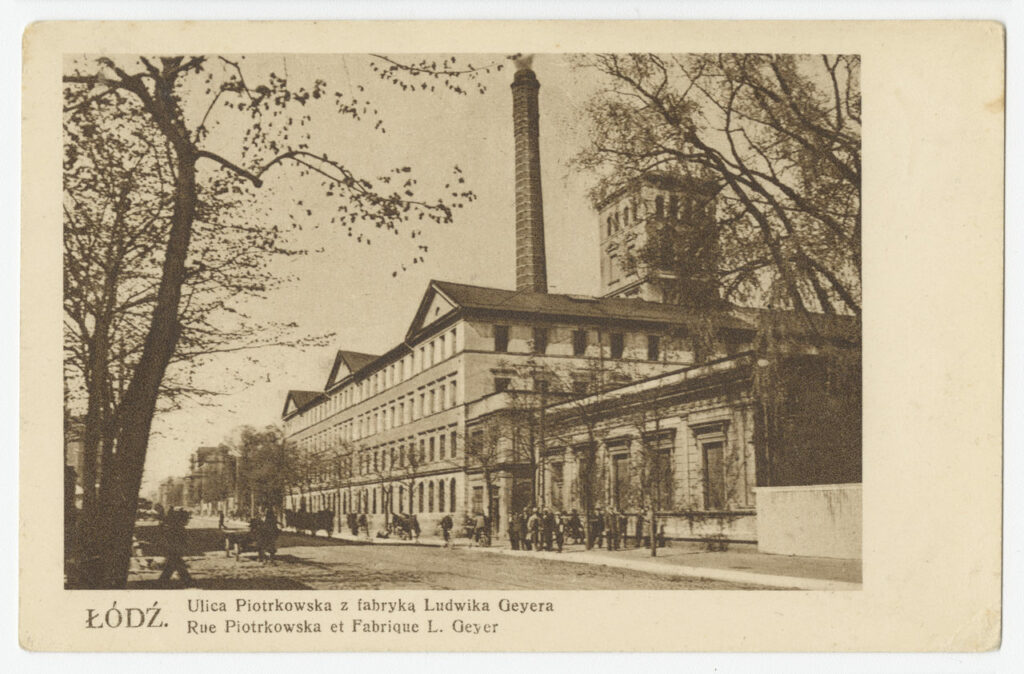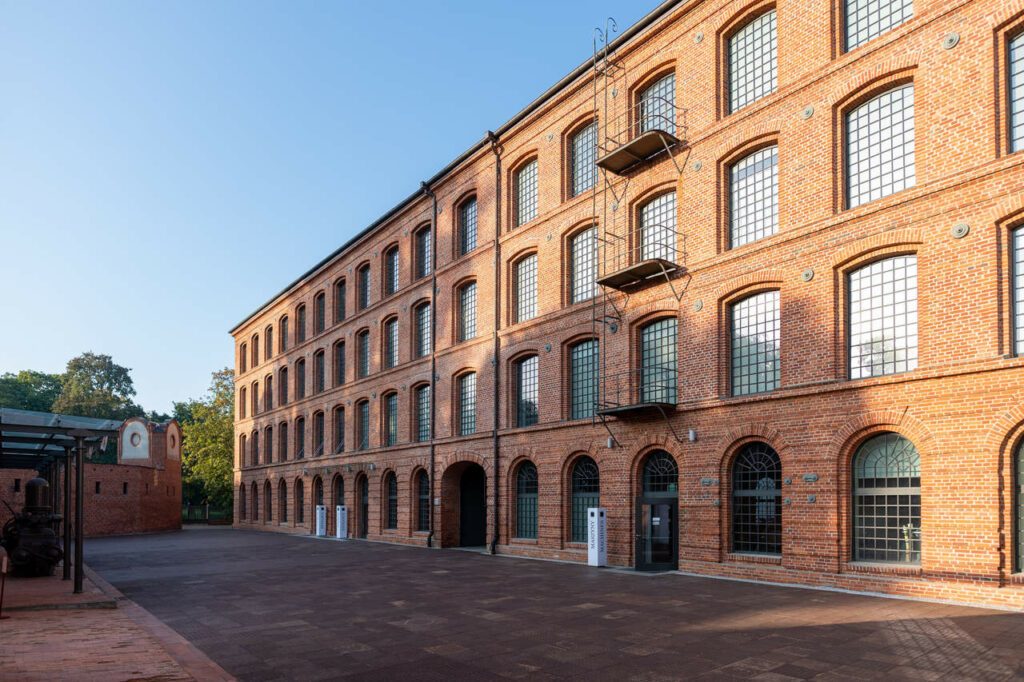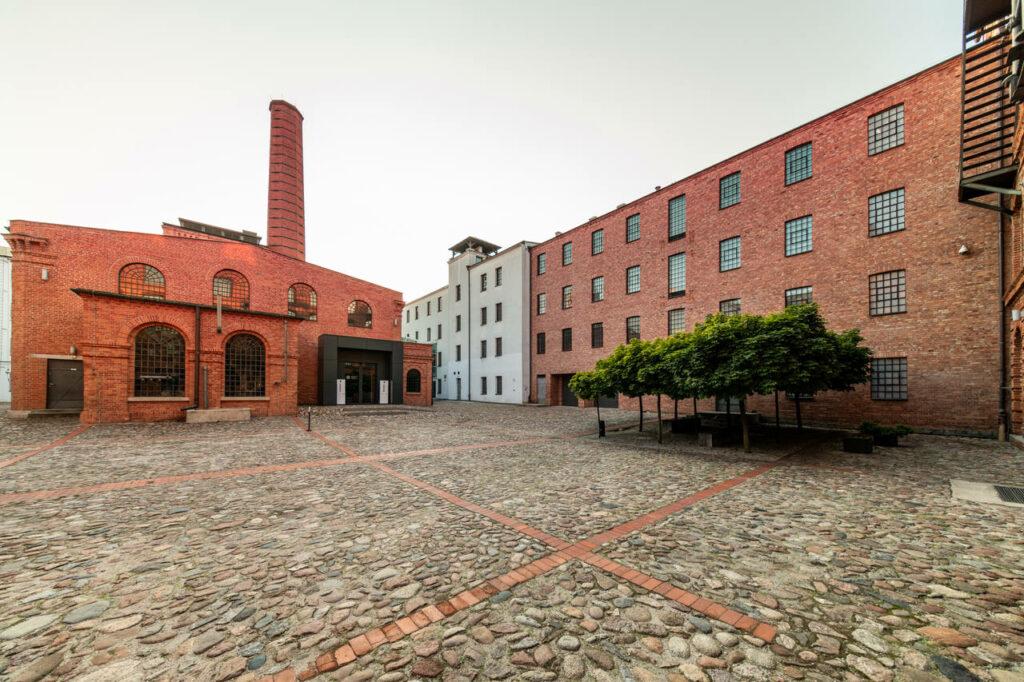White Factory
Piotrkowska 282

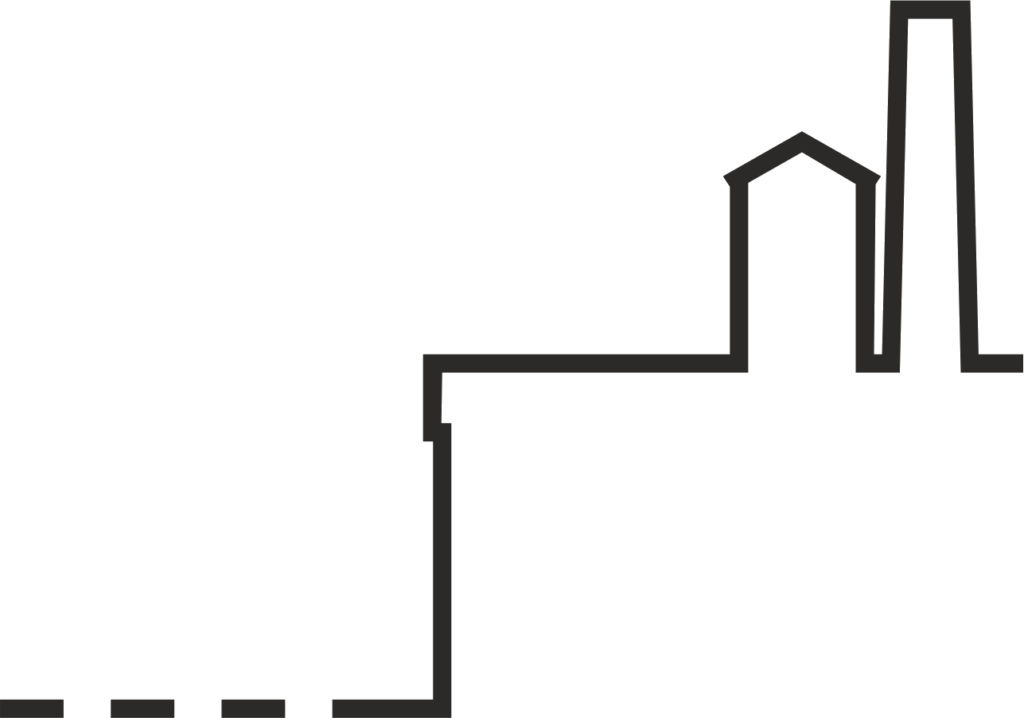
“The White Factory” is the common name for the old textile factory complex founded by Ludwik Geyer. The name comes from the white plaster covering the building façades, standing in stark contrast to the red brick walls of the factories built later in Łódź. Geyer – the son of immigrants from Saxony – came to Łódź in 1828, when the rather small city was just beginning its transformation into a major industrial centre and a multicultural metropolis. In 1835, he began construction on the first mechanised cotton spinning and weaving mill in Łódka, a village of craftsmen located near the bank of the Jasień River. That was where the first factory chimney was constructed prior to the steam engine’s initial activation.
The current layout of the factory is the result of various expansions and modernisations performed by future generations of the Geyer family. Between 1835 and 1837, an additional wing was built along Piotrkowska street. The building featured neoclassical architecture with antiquity influences, as was popular in Europe at the time. The building’s elegant façade was evenly divided by three pseudo-avant-corps topped with impressive pediments. The north wing was constructed a year later. In 1847, at the edge of the pond located in what is currently known as Reymont Park, the most architecturally diverse southern section was built. Its design is attributed to Jan Jakub Gay – one of 19th-century Warsaw’s most renowned architects. The façade, with a prominent section having semi-circular windows and a decorative pediment, quickly became the hallmark of the company, its likeness appearing as decoration on posters, labels and diplomas. It was not until 1886, when Gustaw Geyer was at the head of the company, that the eastern wing of the factory was constructed, effectively enclosing the courtyard from all sides. The building features unplastered brick walls – similar to those of the boiler house constructed in 1838 in the internal plaza.
The mid-19th century was the time of the company’s greatest prosperity. Ludwik Geyer was very invested in innovation, which earned him the epithet of “king of percale”. He also made Łódź history as an industry pioneer and innovator. He was in charge of a fully mechanised textile factory – the first of its kind in the city – in which the complete production process was powered by three steam engines. The factory employed about 650 workers, who, rather uncharacteristically for that time, enjoyed social benefits. He helped build a school for the workers’ children, covered his staff’s medical care, and paid them sickness benefits. His good fortune came to an end when a fire consumed a portion of the plant. The financial aftermath of the disaster was coupled with ill-advised investments in a plant in Ruda Pabianicka and over the next couple of years, the company’s financial problems were exacerbated by the economic crisis caused by Russia’s defeat in the Crimean War. The company’s position was further weakened by direct competition from plants built in Łódź by Karol Scheibler. The final straw was the so-called “cotton famine” in Europe, when cotton imports from the USA ceased due to the American Civil War. Production was halted in 1862 and resumed 6 years later. Gustaw Geyer took charge of the company soon thereafter. The plant remained the property of Geyer family until World War II, when most of the family members refused to sign the Volksliste, resulting in German repressions.
After the war, the plant was nationalised and became State Cotton Textiles Factory no. 3, in 1955 beginning its gradual transformation into a museum. The Textiles Division at the Art Museum was transformed into the Museum of Textiles in 1960. This marked the beginning of one of the world’s first initiatives to revitalise and adapt post-industrial architecture for cultural and exhibition purposes. This process, which began in the 1950s, continues to this day. Its results can be seen at the Central Museum of Textiles in Łódź as well as the neighbouring Łódź City Culture Park.

